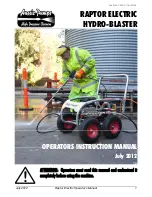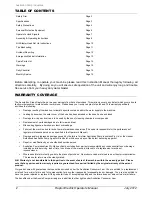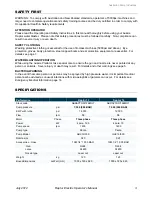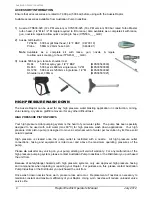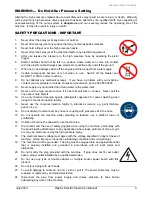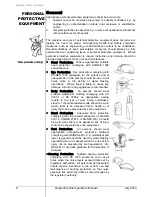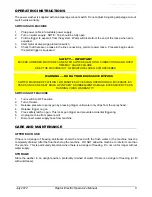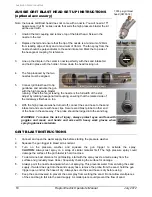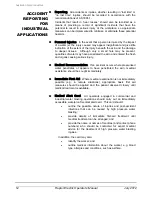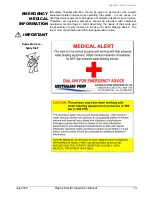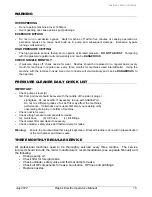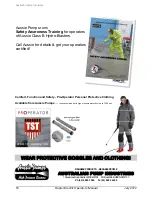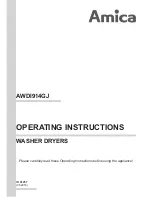
12
Raptor Electric Operator’s Manual
July 2012
Australian Pump Industries
ACCIDENT
REPORTING
FOR
INDUSTRIAL
APPLICATIONS
Reporting
. All accidents or injuries, whether resulting in “lost time” or
“no lost time” injuries, should be recorded in accordance with the
recommendations of AS 1885.1.
Incidents that result in “near misses” should also be recorded as a
means of providing a record of significant incidents that have the
potential to result in serious injury at the workplace, so appropriate
measures can be implemented to minimise or eliminate these potential
hazards.
Personal Injuries
. In the event that a person is injured by the impact
of a water jet, the injury caused may appear insignificant and give little
indication of the extent of the injury beneath the skin and the damage
to deeper tissues. Although only a small hole may be present,
quantities of water may have penetrated the skin and entered the flesh
and organs causing serious injury.
Medical Recommendation
. If an accident occurs where pressurised
water penetrates or appears to have penetrated the skin, medical
assistance should be sought immediately.
Immediate First Aid
. Where medical examination is not immediately
possible (e.g. in remote situations), appropriate basic first aid
measures should be applied and the patient observed closely until
medical treatment is available.
Medical Alert Card
. All operators engaged in commercial and
industrial water blasting operations should carry out an immediately
accessible, waterproof medical alert card. This card should:
outline the possible nature of injuries and post-accident
infections that can be caused by high pressure water
blasting;
provide details of immediate first-aid treatment until
medical treatment can be arranged; and
provide the name or names of medicos (and contact phone
numbers) who should be contacted for expert medical
advice for the treatment of high pressure water blasting
injuries.
In addition, the card may also:
identify the worker; and
outline medical information about the worker; e.g. blood
type, allergies and conditions, such as asthma.

